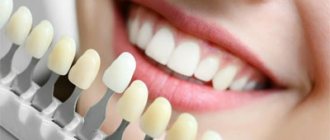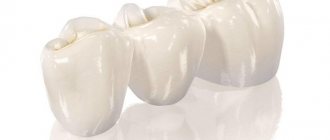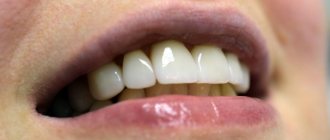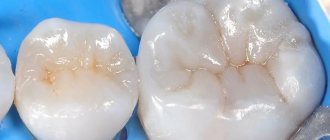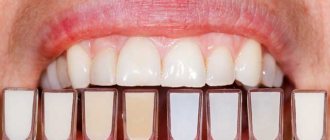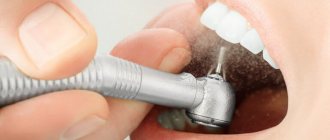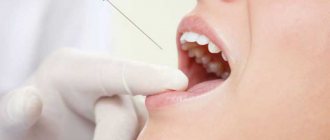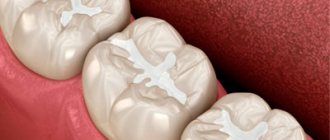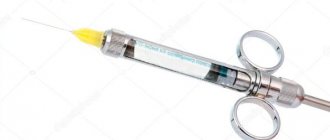Modern light-curing composite filling materials occupy a significant place in the practice of both novice and experienced dentists. There are a lot of light-cured composites on the dental market. And here it is very important to remember not only about the technique of working with the composite, but also the shape of the particles, fullness, but also, of course, the purpose for which the light-curing composite will be used.
Light-curing composite has several synonyms - these are both solar-curing composite and photo-curing composite. The composition of the composite does not change from the name.
You need to remember that a photocurable composite consists of an organic matrix and a filler - this is the main composition. In addition, the light-curing composite has a curing initiator, a curing activator, various pigments, additives, and stabilizers. The organic matrix in the composite is Bis-GMA, TEGDMA, UDMA. A filler is a representative of an inorganic matrix, which includes oxides of silicon, barium, aluminum, strontium, etc. Between all these fillers there are organosilicon compounds, which belong to the group of intersilane fillers. The curing activator for photocurable composites is light with a wavelength of 400-450 nm.
Under the influence of light, camphorquinone is activated, and an irreversible reaction begins to occur between the organic and inorganic fillers of the composite. In principle, this mechanism underlies why fillings harden.
Classification of composites
The classification of composites is quite extensive and includes the following points:
- Classification of composites by particle size;
- Classification of composites according to the composition of the polymer matrix;
- Classification of composites by viscosity;
Now let’s look at each group of composites in more detail.
Classification of composites by particle size divides composites into:
- Macro-filled composites;
- Microfilled composites;
- Hybrid composites;
- Microhybrid composites;
- Nanocomposites.
Macro-filled composites
Macro-filled composites are, so to speak, the “fathers” of all composites. Since macro-filled composites were the first to be introduced to the dental materials market.
Macro-filled composite materials are characterized by a large particle size, the numbers vary from 8 – 12 microns, the average particle size of a macro-filled composite is about 10 microns. In addition to the large size of the macrofilled composite particles, these particles have an irregular, imprecise shape. The fullness of the macro-filled composite is close to 60%, but despite such good physical properties, the macro-filled composite has low wear resistance. When exposed to strong chewing loads, organic filler molecules simply fall out of the matrix of the macrofilled composite, and, naturally, voids form. Due to the loss of filler, the stability of the surface layer of the material is lost. Also, the disadvantages of macrofilled composites include an excessive influence on the hard tissues of the teeth - antagonists, this leads to premature abrasion. Insufficient positive characteristics are noted both in polishing and color fastness of the macrofilled composite. One of the advantages of using macrofilled composites is that it is a radiopaque material and a durable composite material, therefore it is used to restore tooth stumps.
Microfilled composites
Microfilled composites made it possible for the dentist to see how well a filling can be matched to the color of the tooth, and how shiny it is with high-quality polishing. Microfilled composites have a particle size of 0.01 - 0.1 microns, the filling is 55% of the total volume. Due to the insufficient fullness of micro-filled composites, they have a number of negative qualities. First of all, micro-filled composite materials are low-strength, that is, not suitable for restoration of Black classes 1 and 2. In addition, microfilled composite materials are non-radiopaque, do not have hydrophobicity, and have a high coefficient of thermal expansion.
The biggest advantage for these materials is their high-quality polishing and shine. In addition, the advantages of micro-filled composites include the fact that they have a high elasticity index. In simple words, due to their natural elasticity, microfilled composites compensate for the stress created at the adhesive-filling material interface. Microfilled composite materials are used to restore defects in hard dental tissues in the cervical area, and can also be used as an additional layer when using other composite materials (layered restoration technique).
Hybrid composites
Hybrid composite materials are distinguished by the fact that the material itself does not contain particles of the same size. Hybrid composites include particles ranging in size from 0.01 microns to 10 microns. The filling of hybrid materials is also variable, ranging from 50% to 70% by volume.
Hybrid composites are like the border between the previously described macro/micro-filled composites, where there are more negative characteristics than positive ones, and microhybrid composites, which currently do not lose their popularity in the practice of dentists.
Microhybrid composites
As I described earlier, microhybrid composites are one of the most popular types of composite in the modern dental world. And for good reason. It was with microhybrid composites that the stage in the use of adhesive dental restoration techniques began.
Microhybrid composites are characterized by particle sizes approaching spherical shape, with a size of about 1 micron. In addition to such small particles, the microhybrid composite contains particles whose size reaches 3.5 microns.
Microhybrid composites include positive properties such as:
- Strength;
- Low water absorption;
- Break resistance;
- Good aesthetic properties, which allows you to select high-quality filling material not only in color, but also in transparency;
- Good polishability;
- X-ray contrast.
Microhybrid composite is not an ideal composite material, since this composite has polymerization shrinkage, which can reach 3.5% of the volume.
Microhybrid filling materials are used quite widely by dentists not only in therapeutic dentistry, but also in orthopedics.
Indications for the use of microhybrid composites may be:
- Restoration of cavities of class 1-5 according to Black;
- For the manufacture of bridges, if the defect is not very extensive;
- Formation of the tooth stump;
- Tooth splinting;
- Repairing orthopedic structures made of ceramics or plastic;
- Inlays, veneers.
Therefore, it can be said that microhybrid composites are versatile composites that can be used in dentistry for restorative therapy, however, the shrinkage of this composite and the demanding work must be kept in mind.
Nanocomposites
Nanocomposites are a fairly new class of composite materials in dentistry. The “nana” particle itself indicates the size of the filler – 10-9 degrees. This quantity is sooooo small and is often compared to an atom.
Nanocomposites are characterized not only by small particles (for understanding or comparison with microhybrid composites 0.01 μm = 10 nm), but also by good filling of about 75% of the volume. The advantages of nanocomposites follow from this:
- Durable composite;
- Low shrinkage (maximum 2.3%);
- Good aesthetics of the composite;
- Polishing;
- Long-lasting shine after high-quality polishing;
The classical idea of composite materials that can be used in dentistry ends with nanocomposites. To achieve ideal physical and aesthetic properties, composites were constantly modified and combined with other materials. This is how ormokers, silorans, compomers, and giomers entered the dental market.
Advantages of light fillings for teeth
A filling made of light-curing material belongs to the latest generation of dental technologies and combines the advantages of all other filling materials without their characteristic disadvantages. Light-curing fillings:
- They are stronger than cement and plastic, but are non-toxic, so they do not harm dental tissue and do not change its color.
- Like ceramic fillings, they provide an even load on the teeth and last a long time, but can be installed after the pulp has been removed.
- They are easy to install and durable, like chemical compounds, but do not dry out over time and have a greater number of shades, making them optimal for filling anterior teeth.
Teeth before and after restoration with light-curing filling material
There are only two disadvantages to filling with a light-hardening compound. The first disadvantage is the inability to use this method of filling in hard-to-reach places due to potentially insufficient light polymerization of the material. The second disadvantage of the reflective composition is its high price, so it is used only for installing permanent fillings.
In private clinics in Moscow, the cost of installing a light-curing filling can exceed 5 thousand rubles; in regional dentistry, the price fluctuates between three thousand rubles.
Ormokers
Ormokers are ORGANIC MODIFIED CERAMICS. This type of material consists of particles - barium glass, fluorapatite, which form an organic matrix. The size of particles in ormokers reaches up to 1.7 microns. Ormokers are well filled up to 70% by volume. Ormokers have good strength; some literature sources even recommend the use of ormokers in patients with allergies to composites, but there are no confirmed clinical cases. The positive properties of ormokers, which leads to their use in restoration of any class according to Black, include:
- Good strength;
- Minimal shrinkage;
- Wear resistance;
- Aesthetics;
- Polishability.
However, in terms of their application, ormokers are inferior to microhybrid composites.
Silorans
Siloranes are representatives of a new era of substances in dentistry. Siloranes also contain substances used in the chemical industry. However, this material is distinguished by its good biocompatibility, low shrinkage, and wear resistance. Silorans have a convenient working time, which reaches up to 9 minutes in the presence of general lighting.
Siloranes are used to restore Black class 1–2. There are some nuances in working with silorans. The first is the need to install a gasket; the second is its incompatibility with adhesive systems of compomers and flowable composites. However, silorans are pleasant to work with: they do not stick to the tool, pack well and are polished.
At this point in time, unfortunately, there are no long-term clinical results with the use of silorans, but the prospects for this group of materials are not bad!
Compomers
Compomers are a duo of composite and glass ionomer cement. This group of materials combines the properties of both composite and GIC. The curing mechanism of compomers is described as a cascade, where first polymerization occurs under the influence of light, and then under the influence of water an acid-base reaction characteristic of cement is activated.
Compomers have the following properties:
- Elastic filling material;
- Fluoride release;
- Undemanding to working conditions: can be applied in large portions, does not require careful isolation from water, you can skip the pickling stage;
- Reacts less to specifically targeted rays of the polymerization lamp.
With such properties, the compomer is used to restore Black classes 3 and 5, restorations on baby teeth, and fissure sealing.
Indications for installation
Permanent fillings are placed when necessary to eliminate carious or non-carious defects. Due to the variety of fillers that can be included in light-curing composite fillings, they can be placed if there are any indications for installing permanent fillings.
Specific indications for which light-curing filling material is not only desirable, but necessary, are:
- pathological change in crown size;
- injuries, fractures and chipped teeth requiring restoration;
- pathological mobility grade 1–3;
- the presence of scattered carious cavities on the entire surface of the tooth;
- elimination of defects in the front teeth;
- defects of the root or dental neck;
- the presence of pigmentation that cannot be eliminated by other methods;
- defects in a small area of enamel, where other filling compounds will not hold.
Precautions after filling
After installing a light-curing filling, it is extremely important to follow your dentist’s recommendations for oral care and nutrition during the first time after the procedure. You will be able to eat no earlier than an hour after filling
, food should be neutral in temperature and hardness.
The final polymerization process continues for several more days, so for the next 3–5 days you should refrain from foods and drinks with active pigments: cherries, beets, coffee, pomegranate juice, tomato soups. Such precautions are necessary to maintain the shade of the installed composite.
Service life of the light seal
If you follow medical recommendations, the service life of a light filling installed on a tooth will be 5–6 years.
The patient must observe the rules of oral hygiene, undergo preventive examinations every six months and adhere to proper nutrition, especially in the first week after he received a filling.
The diet should contain a balanced amount of hard and soft foods, a sufficient amount of fruit and dairy products. Most dentists insist on the need to stop smoking for at least the first two weeks after filling, otherwise the preservation of the composite shade is not guaranteed. Natural dental tissue and photopolymer are colored differently, so the artificial material will stand out noticeably against the background of the dentition.
